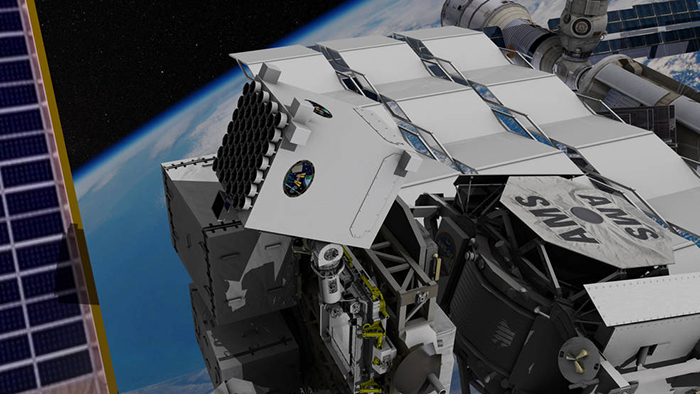In early 2018, NASA announced that it had demonstrated a new type of celestial navigation for the first time. Called XNAV, for x-ray pulsar-based navigation, it relies on beams of radiation from pulsars—the cinders of exploded, massive stars. As pulsars rapidly rotate, they cast energy beams through space like frenetic lighthouses. Those beams sweep past Earth, creating a steady pulse rate. The timing of these pulses can be used just like signals from Global Positioning System (GPS) satellites, which pinpoint the moment-to-moment positions of cars and planes. XNAV could let probes know their whereabouts and thus navigate in deep space, where signals from the Earth-based GPS system grow weak. See also: Celestial navigation; Giant star; Global Positioning System (GPS); Navigation; Pulsar; Stellar evolution; X-ray astronomy; X-rays
The cosmic wayfinding experiment is running on the NICER (Neutron-star Interior Composition Explorer) observatory, installed on the exterior of the International Space Station. Last Veteran’s Day, the experiment detected x-ray beams from four individual millisecond pulsars, so named because they emit x-ray pulses every few milliseconds. See also: Space station

The NASA researchers used the pulses in an attempt to spatially locate the experiment itself as its space station host whipped our planet at nearly 28,000 km/h (17,000 mi/h). Comparing the XNAV-derived positioning to standard, GPS-derived coordinates showed that the experiment accurately tracked the experiment’s position to within a few miles of its actual location. While that crude a resolution would not suffice for ground-based GPS needs—the system is now often precise to within a few feet—in the huge expanses of the solar system, vessels would still be able to effectively get where their operators intended for them to go. Scientists will now work on improving XNAV’s resolution down to a few hundred feet, as well as making its components smaller and more efficient. See also: Earth; Solar system
Unlike the GPS system, enabled by a fleet of Earth-orbiting satellites, signals from pulsars can be accessed anywhere in space. The payoff for the technology would be to allow spacecraft to autonomously navigate without the need to communicate with Earth for long periods. Furthermore, the equipment for x-ray–based navigation could weigh less and take up less volume aboard a spacecraft than traditional radio receivers and transmitters. Examples of deep space missions that could leverage XNAV in the future include explorations of the moons of Jupiter and Saturn, as well as even voyages into interstellar space. See also: Enceladus; Jupiter; Radio receiver; Saturn; Space communications; Space flight; Titan





